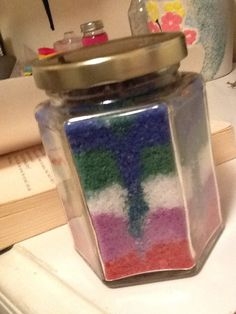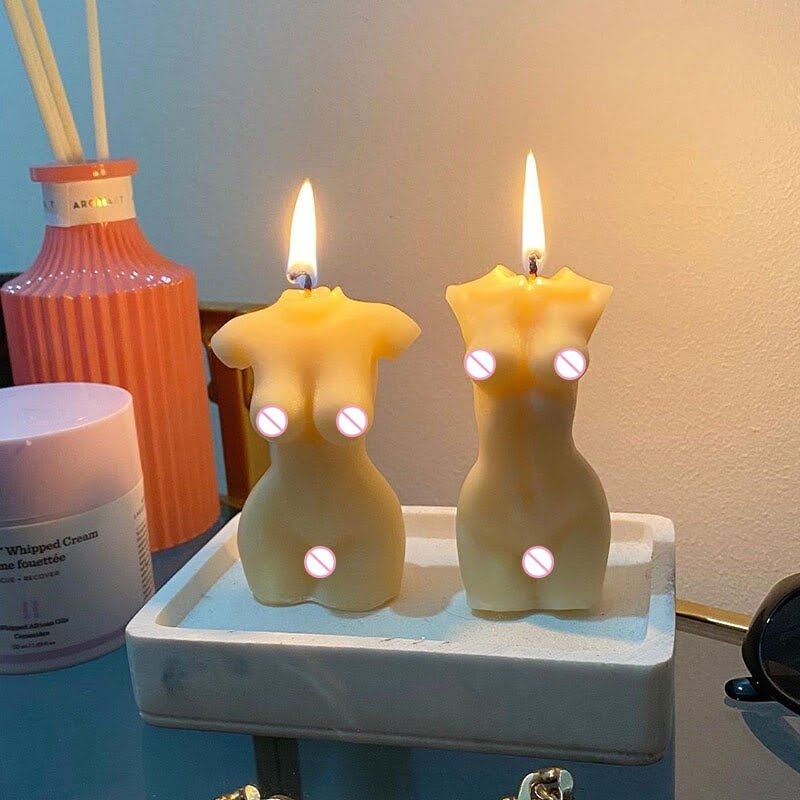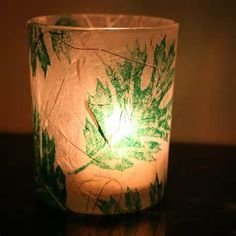Are you looking for a cost-effective and efficient way to stay warm during the colder months? Look no further than making a heater with candles and clay pots. This DIY project not only helps you save on energy costs but also provides an alternative heating solution. In this article, we will explore the concept of creating a homemade heater using readily available materials and simple steps.
The idea of using candles and clay pots as a heating source may sound unconventional, but it’s a tried and tested method that has been used for centuries. By harnessing the heat from the candles and channeling it through the clay pots, you can create a steady and gentle warmth in any indoor space. This concept is not only cost-effective but also environmentally friendly, making it an attractive option for those looking to reduce their carbon footprint.
In the following sections, we will delve into the details of what materials are needed to construct the homemade heater, step-by-step instructions on how to assemble it, important safety precautions to keep in mind, as well as tips and tricks to enhance its effectiveness. Additionally, we will compare the cost of making this DIY heater versus purchasing a traditional heater and highlight the potential benefits of opting for a homemade heating solution.
So, let’s get started on understanding how to make your own heater with candles and clay pots.
Materials Needed
Clay Pots
The first and most important item you will need to create a heater using candles and clay pots is, of course, the clay pots themselves. You will need two different sized clay pots – one large enough to fit over a small candle and one smaller pot that can fit inside the larger pot with enough space around it for air circulation.
Candles
You will also need a sufficient number of candles to generate enough heat for the heater to be effective. The number of candles required will depend on the size of the area you are trying to heat. Be sure to use non-drip candles for this project to avoid any messy wax spills.
Bricks or Stands
To ensure proper air circulation and stability for your homemade heater, you will need some type of stand or bricks to elevate the large clay pot off the ground. This will allow airflow underneath the pot, which is crucial for efficient heat distribution.
Lighter or Matches
In order to light the candles and get the heater up and running, you will need a lighter or matches on hand. It’s important to have this essential item ready before assembling your DIY heater.
These materials are all essential components in making a heater with candles and clay pots. By gathering these items beforehand, you can ensure a smooth and successful crafting process.
Step-by-Step Instructions
To assemble a heater with candles and clay pots, follow these step-by-step instructions to create an effective and economical heating solution for your space.
Gather the Supplies
Start by gathering all the necessary materials, including large terracotta pots, smaller terracotta pots, tea light candles, a heat-resistant mat or surface, and a lighter or matches. Make sure to purchase enough supplies to create multiple layers of the heater for increased efficiency.
Creating the Heater
Begin by placing the larger terracotta pot upside down on the heat-resistant surface. Next, light the tea light candles and place them inside the larger pot. Then, carefully cover the larger pot with the smaller terracotta pot, ensuring that it fits snugly on top of the larger one. Repeat this process with additional layers of pots if desired.
Adjusting for Heat Output
To control the level of heat output from the homemade heater, simply adjust the number of candles used in each layer. More candles will generate more heat, while fewer candles will produce less heat. Additionally, consider adding metal nuts or washers between each layer of pots to help distribute and retain heat more evenly.
These step-by-step instructions make it easy to assemble a cost-effective and efficient heater using just a few simple materials – making a heater with candles and clay pots is an innovative approach to staying warm without breaking the bank.
Safety Precautions
When making a heater with candles and clay pots, it is essential to prioritize safety to prevent any accidents or hazards. Here are some important safety precautions to keep in mind while assembling and using the homemade heater:
1. Ventilation: Ensure that the area where the heater will be placed has proper ventilation to prevent the buildup of carbon monoxide. It is recommended to use the heater in a well-ventilated space or open area.
2. Fire Safety: Keep flammable materials away from the homemade heater at all times. Do not place the heater near curtains, paper, or any other easily combustible items. Always have a fire extinguisher nearby as a precaution.
3. Monitoring: Never leave the homemade heater unattended while it is in use. Keep an eye on it at all times to avoid any potential mishaps.
4. Placement: Place the homemade heater on a stable, heat-resistant surface to prevent accidental spills or tipping over.
5. Children and Pets: Keep children and pets away from the homemade heater to avoid burns or other accidents.
Adhering to these safety precautions is crucial for ensuring that the process of making and using a heater with candles and clay pots is as safe as possible. By prioritizing safety, you can enjoy the warmth of your DIY heater without worry about potential risks.
Benefits of Using a Homemade Heater
A homemade heater using candles and clay pots offers several advantages over traditional heaters, making it an appealing option for individuals looking for a cost-effective and environmentally friendly heating solution. Here are some of the key benefits of opting for a DIY heater:
- Cost-Effective: One of the primary advantages of making a heater with candles and clay pots is its cost-effectiveness. Traditional heaters can be expensive to purchase and operate, especially during colder months. In contrast, the materials required to create a homemade heater are relatively inexpensive and readily available, resulting in significant cost savings.
- Environmentally Friendly: Homemade heaters are eco-friendly alternatives to traditional heating systems. They utilize natural resources such as candles and clay pots, reducing the reliance on electricity or gas-powered heaters that contribute to carbon emissions. By choosing a DIY heater, individuals can reduce their environmental impact and lower their carbon footprint.
- Portability and Versatility: Another advantage of homemade heaters is their portability and versatility. Unlike fixed traditional heating systems, DIY heaters can be easily moved from one room to another, providing targeted warmth where it is needed most. Additionally, they can be used in various settings such as outdoor gatherings or camping trips, providing heat without the need for electricity or gas.
In addition to these benefits, creating a heater with candles and clay pots allows individuals to exercise their creativity and resourcefulness. It provides a sense of satisfaction knowing that they have constructed a functional heating device using simple materials. Overall, the advantages of opting for a DIY heater make it a compelling option for those seeking an economical, sustainable, and versatile heating solution.
Tips and Tricks
Creating a heater with candles and clay pots can be an effective way to generate heat in a cost-efficient manner. However, there are some additional tips and tricks that can enhance the effectiveness and efficiency of the homemade heater.
One important tip is to use unscented candles when making a heater with candles and clay pots. Scented candles may emit strong odors when heated, which could be unpleasant or even cause discomfort for some individuals. Additionally, unscented candles tend to burn more evenly and produce a steady source of heat without any added fragrance.
Another trick to enhance the performance of the homemade heater is to place a reflective surface behind the clay pots. This could be as simple as using aluminum foil or reflective insulation material. By doing so, the heat generated by the candles is reflected back towards the pots, increasing their overall heating capacity.
It’s also recommended to place the homemade heater in a small, enclosed space for maximum efficiency. A well-insulated room or area will help contain the heat produced by the heater, allowing it to warm up the space more effectively. Additionally, ensure that there is proper ventilation in the room to prevent any potential buildup of carbon monoxide from the burning candles.
| Tips and Tricks | Additional Information |
|---|---|
| Use Unscented Candles | Avoid unpleasant odors and ensure even burning |
| Place Reflective Surface Behind Pots | Reflect heat back towards pots for increased efficiency |
| Utilize in Small Enclosed Space | Optimize heating capacity in a well-insulated area with proper ventilation |
Cost Comparison
When it comes to heating options, cost is a significant factor to consider. In this section, we will compare the cost of making a homemade heater using candles and clay pots versus buying a conventional heater. The cost comparison will help you evaluate the financial aspect of both options and make an informed decision based on your budget and preferences.
Building a homemade heater with candles and clay pots is an incredibly cost-effective solution. The materials needed for this project are relatively inexpensive and easily accessible. Clay pots, which are the main components of the heater, can be purchased at affordable prices, along with candles, aluminum trays, and a few other basic supplies. In contrast, purchasing a conventional heater can be quite costly, with various models ranging in price depending on their size, features, and energy efficiency.
To further illustrate the cost comparison between the two heating options, let’s consider the operational expenses. A homemade heater using candles and clay pots requires minimal ongoing costs, mainly just replacing candles when they burn out.
On the other hand, conventional heaters typically run on electricity or gas, resulting in higher utility bills over time. By considering both upfront and long-term expenses, it becomes evident that making a heater with candles and clay pots offers significant savings compared to buying a conventional heater.
| Heating Option | Initial Cost | Operational Costs |
|---|---|---|
| Homemade Heater (Candles & Clay Pots) | Low | Minimal – Replacement Candles |
| Conventional Heater (Electric/Gas) | High | Significant – Utility Bills |
By evaluating these costs side by side, it is clear that making a homemade heater with candles and clay pots not only provides an affordable initial investment but also results in lower operational expenses compared to buying a conventional heater.
Conclusion
In conclusion, the DIY heater using candles and clay pots is a cost-effective and environmentally friendly alternative to traditional heaters. By following the step-by-step instructions provided, individuals can easily create their own homemade heater using readily available materials. The use of this innovative heating method not only provides warmth but also reduces energy consumption, making it a sustainable option for heating small spaces.
By utilizing simple materials such as clay pots and candles, individuals can significantly reduce their energy bills while also minimizing their carbon footprint. The benefits of using a homemade heater extend beyond cost savings, as it promotes resourcefulness and creativity in finding solutions to everyday needs. Additionally, with proper safety precautions in place, this DIY heater can provide a safe and efficient heating option for various indoor settings.
Ultimately, the decision to make a heater with candles and clay pots offers both economic and environmental advantages. With careful planning and attention to detail, individuals can enjoy a cozy and warm environment without compromising on sustainability. This cost-effective heating solution presents an opportunity for individuals to take control of their energy consumption while embracing a more eco-friendly approach to staying warm during colder months.

Welcome to my candle making blog! In this blog, I will be sharing my tips and tricks for making candles. I will also be sharing some of my favorite recipes.





